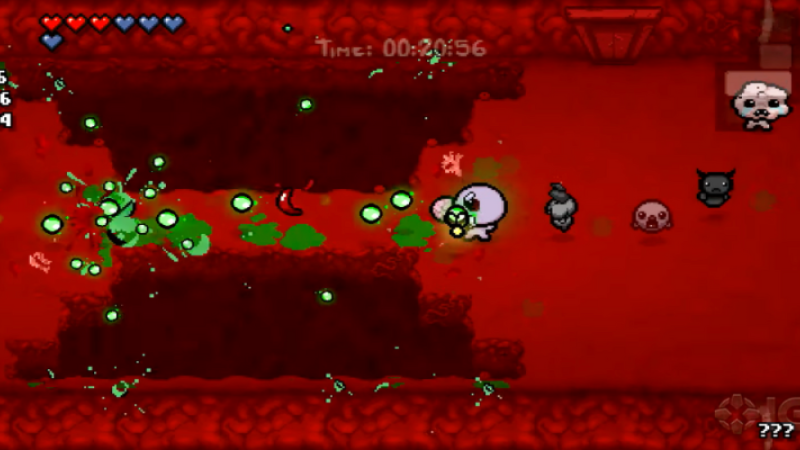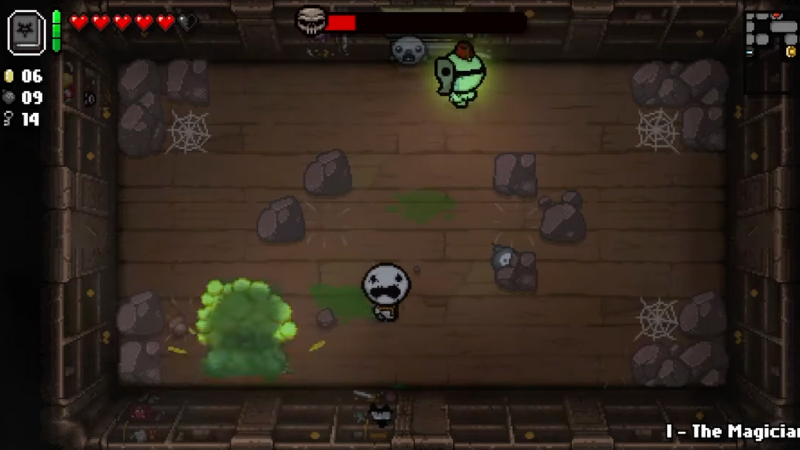
Revered for its challenging gameplay and rich narrative depth, The Binding of Isaac: Rebirth serves not only as a complex roguelike experience but also as a modern canvas of symbolic storytelling. This indie game, developed by Edmund McMillen, dives into the unsettling yet profound narrative of a young boy named Isaac who faces horrifying trials in a seemingly endless basement. As players traverse through these darkened corridors, the layers of psychological, religious, and existential symbolism begin to unfold. This article dives deep into these dimensions, dissecting the symbolic representations and story themes that make The Binding of Isaac: Rebirth a unique exploration of faith, identity, and human struggle.
Biblical References and Their Interpretations
The name and concept of the game draw significant influence from the scriptural account of Abraham, who faced a divine test of faith through the requested sacrifice of his son, Isaac. However, in this video game adaptation, the narrative takes a dark twist, with Isaac's mother receiving a message from above urging her to prove her faith by harming her own son. This fundamental plot sets a stage where religious fanaticism clashes with innocent suffering.
In-depth, each level and boss in The Binding of Isaac is rife with biblical references—ranging from the Seven Deadly Sins to the Four Horsemen of the Apocalypse. Each character and monster Isaac encounters can be seen as a manifestation of biblical sins or tales, reimagined through the lens of a child’s mind dealing with abuse and isolation. For instance, the character “Lust” moves quickly toward Isaac, representing an overwhelming desire that must be escaped rather than confronted.
Psychological Layers and Childhood Innocence

Isaac’s descent into the basement metaphorically parallels a dive into his subconscious, where he confronts his deepest fears and suppressed emotions. The grotesque and often disturbing enemies represent Isaac’s interpretation of the world around him—a world that is hostile and unforgiving. Items like “Mom’s Knife” and “Dad’s Lost Coin” suggest a backstory filled with domestic issues, where everyday objects turn into weapons or symbols of loss.
Moreover, the repeated theme of transformation through items reflects the volatility of Isaac’s identity. Each item radically alters Isaac’s abilities and appearance, symbolizing the quick shifts in self-perception and capability children can experience as they grow and learn in challenging environments.
Exploration of Faith and Sacrifice
Central to The Binding of Isaac: Rebirth is the exploration of faith, depicted not through sanctuary and solace but through trial and tribulation. Isaac’s mother, driven by her perceived divine command, embodies the destructive potential of unchecked faith. This aspect of the game questions the nature of belief and the extremes to which it can be taken. The game doesn’t dismiss faith entirely but highlights the importance of questioning and understanding one’s beliefs rather than blindly following them.

The sacrificial theme extends beyond biblical references, inviting players to ponder the nature of personal sacrifice. Isaac, by continuing to fight through his fears and progressing deeper into the unknown, sacrifices his innocence and safety. This reflects the daily sacrifices individuals make, be it for survival, safeguarding their loved ones, or in seeking the truth.
Existential and Ethical Themes
The Binding of Isaac touches deeply on existential queries tied to the meaning of struggle and the essence of evil. Items and characters often pose moral dilemmas or represent existential dread. For example, “The Pact” item offers powers at a cost, prompting players to consider the consequences of their choices within the game, reflective of real-life decisions.
The game also confronts the concept of predestination versus free will. Every playthrough generates a new layout and new challenges, suggesting a predestined set of trials but also offering the freedom to choose how to navigate them. By engaging with these themes, players might reflect on their autonomy and the impact of their choices both within and outside the game.
Cultural Impact and Audience Reception

Since its launch, The Binding of Isaac: Rebirth has not only garnered a substantial player base but has also made significant inroads into various gaming communities, praised for its profound thematic depth and interpretative openness. The game's appeal lies in its rich tapestry of symbolism and narrative elements, adeptly interwoven to explore the darker corners of human psychology and existence. It uniquely portrays human fears, especially those related to abandonment, persecution, and the loss of innocence, striking a chord with anyone who has grappled with such issues.
The game’s intricacy and the complexity of its subject matter reflect the challenges of growing up under troublesome and often harrowing circumstances. Players find themselves relating to Isaac’s plight and the monstrous representations of his fears and anxieties. This connection is further deepened through the gameplay mechanics, which are as punishing as they are rewarding, mirroring the game’s underlying theme of struggle and resilience. The requirement for players to adapt quickly or face repeated setbacks serves not only as a gameplay mechanic but also metaphorically underscores the life experiences of many individuals who find themselves constantly having to adjust to new and difficult situations.

Additionally, The Binding of Isaac: Rebirth has sparked insightful dialogues and debates regarding its complex storytelling and symbolic depth, enhancing the perception of video games as a potent tool for modern narrative expression. Gaming forums, blogs, and social media platforms are rife with interpretations and analyses, pointing to a vigorous engagement with the game’s story and its larger implications. This discourse extends the game’s life, encouraging new players to explore its depths and returning players to uncover new meanings or reinterpret familiar ones.
Academically and culturally, the game has been the subject of various articles, papers, and discussions regarding the role of storytelling in video games. Its ability to intertwine ludic and narrative elements has made it a case study in video game design and storytelling courses, indicating its significance in both gaming culture and its potential as a subject of scholarly interest.
In conclusion, The Binding of Isaac: Rebirth is a compelling study of complex themes through the guise of a video game. It challenges players not only in skill but also intellectually and emotionally, using its symbolic storytelling to pose significant questions about religion, identity, and human struggle. Every component, ranging from character design to level construction, carries a multitude of significant layers that weave together to form a dense narrative fabric, captivating and stimulating contemplation well beyond when the game has ended.





